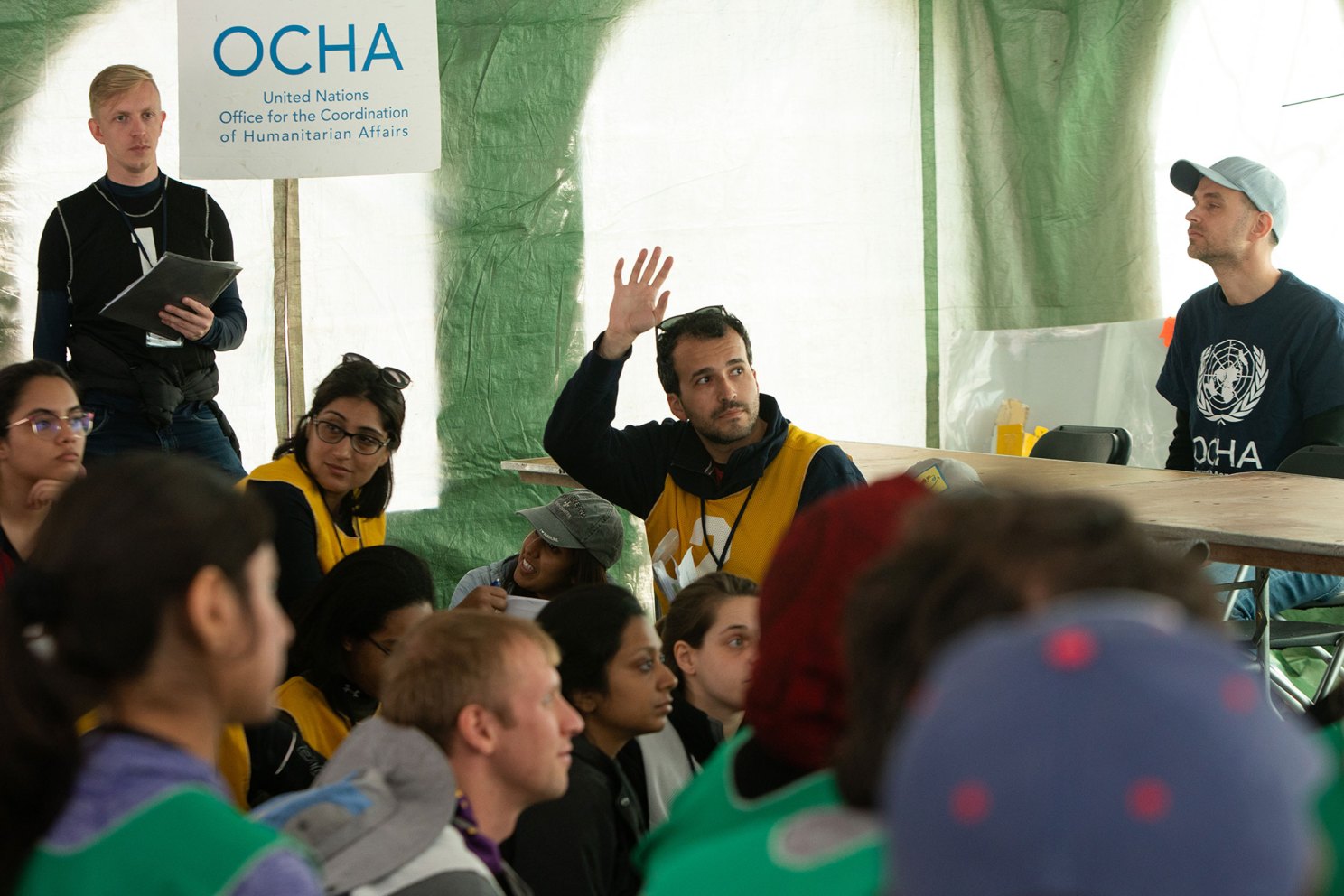Skills and grit: HHI’s 3-day field simulation offers emergency training

Students during a simulated UNOCHA meeting. Credit: Persistent Productions
When I pull into the lot at the Harold Parker State Forest in North Andover at 8 a.m., the early morning fog still burning off, people in camouflage and combat boots unload boxes alongside my car. Straight ahead is a roadblock erected out of boards, its scrawled, red-painted letters ordering passersby to stop and have their papers ready.
I’ve arrived at the Harvard Humanitarian Initiative (HHI)’s three-day field simulation, which provides humanitarian students and professionals the rare opportunity to fully immerse themselves in the experience of working in a humanitarian emergency. The simulation acts as a capstone for Harvard graduate students in the Interdisciplinary Concentration in Humanitarian Studies. It is also the final project for those enrolled in HHI’s two-week Humanitarian Response Intensive Course, offered annually to humanitarian professionals from around the world. SIM attendees spend two nights in the forest, learning to think on their feet as they engage in a complex conflict and disaster scenario.
The simulation has taken place yearly since its first iteration in 2004, but due to the pandemic, this is the first in-person one since 2019. It is a massive undertaking in terms of operations, coordination, and planning, explains Irini Albanti, HHI’s executive director. In addition to basic supplies such as large tents and food for hundreds of participants and volunteers, staff need to organize costuming, dozens of tents, and technological and medical supplies akin to what one would find at a real disaster site. However, HHI is greatly supported by local and international organizations, which donate supplies and space for its activities every year, and donors who support both the simulation and Harvard’s Interdisciplinary Concentration in Humanitarian Studies.
The field simulation is also supported by a large group of enthusiastic volunteers — over 130 this year — including students, doctors, and humanitarian aid workers. I spot a group of undergraduates getting into character on the side of Harold Parker’s main road. In the volunteer tent, emergency physicians hand out supplies for the weekend. Students from Newport’s U.S. Naval War College prepare for their roles — an arrangement that not only helps the simulation participants, one explains, but also offers naval students an intensive training opportunity before they deploy to humanitarian crises. I meet two of Harvard’s Scholars at Risk, both of whom were evacuated from their home countries last year and are here to support students interested in humanitarian work. A cohort of medics from Massachusetts General Hospital runs a painstakingly organized medical tent with rows of sterile equipment hanging from the walls, ready to train students on tending wounds in the field. Most of the volunteers have participated in the simulation for years, one volunteer explains, as he shows me around the massive tent—an air-conditioned marvel recently used by FEMA in crisis response activities.
“It is the volunteers that make this experience for the students,” says Michelle Niescierenko, HHI faculty member, and emergency physician at Boston Children’s Hospital. “Coming locally, nationally and internationally from more than 10 countries just to volunteer, they share their expertise and experience freely with students on topics ranging from migration and security to gender-based violence and water and sanitation. The volunteers are the heart of the simulation; without them, there would be no simulation.”





